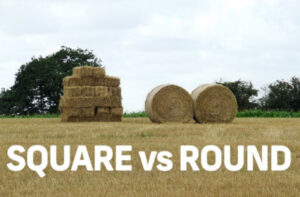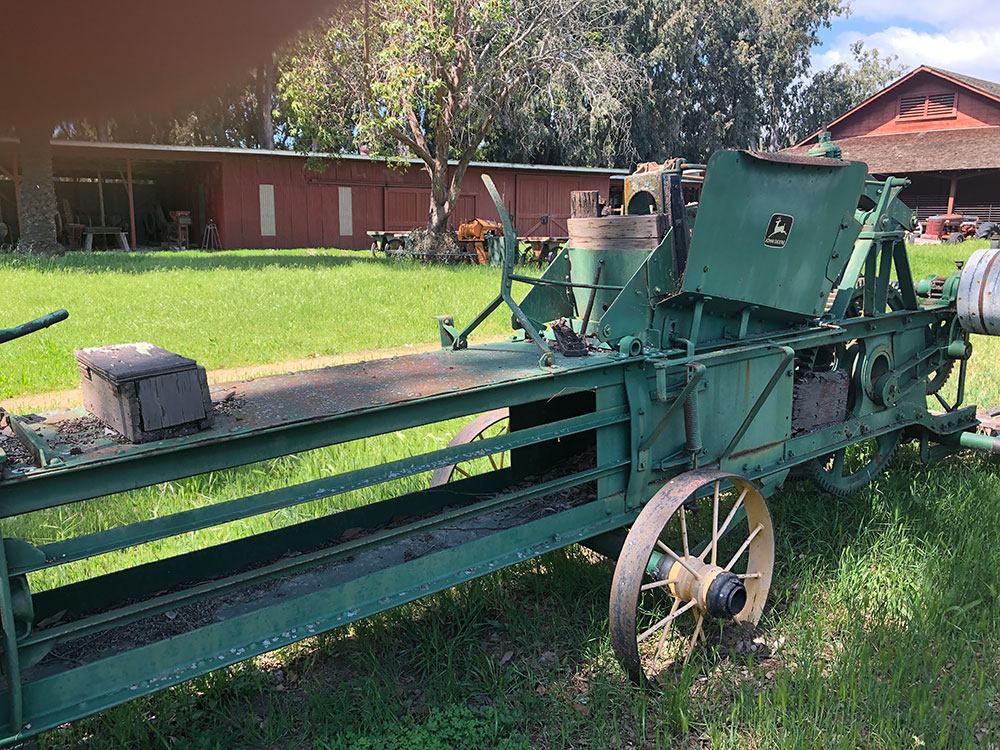Hay Press
The purpose of a hay press was to compact (reduce the size) of hay from the field so that it could be stored more efficiently.
The press would be lowered to the ground by removing the wheels or digging a hole for the wheels. The hay was placed into the hopper from the hay wagon. The horse would then walk in a circle, turning a cam, which pushed a plunger into the chamber. This compressed the hay to 1/4th to 1/8th of the original bulk. A one-horse outfit could bale about 1000 pounds an hour. It took about six people to operate a medium-sized hay press: two people fed the baler, one tied the bales with twine, another removed the finished bales and extra hands were needed to tend the horses.
Widely used by 1880, it was then powered by gasoline engines around 1910. By the 1950's hay bailer machines both picked the loose hay in the field and baled it in one process.
Hay Press in Action:
https://www.youtube.com/watch?v=vN94W6KaDRA.

Sizes and Shapes of Hay Bales
Small square bales of hay are generally the better choice for smaller farms. The small bales are lightweight enough to be moved by hand (50-150 lbs.) and small enough to be transported in the back of a regular-sized pickup truck or flatbed. Square bales are sufficient for farms with few animals. The larger round bales are more often utilized in larger operations that require more feed more often.
